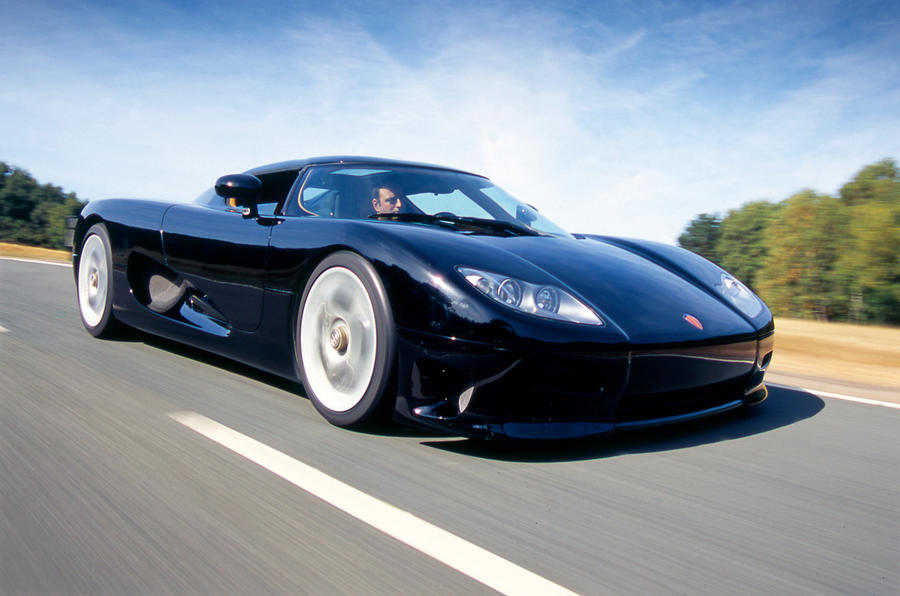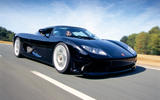Tested 23.9.03
Sweden’s new rocket was a welcome left-field addition to the hypercar market and only the second car to top 200mph in an Autocar road test.
At the CC8S’s centre was a 62kg carbonfibre tub, which was built in-house. The bodywork was also carbonfibre. Power came from a Ford-sourced V8 with new forged pistons and conrods, titanium headers, a carbonfibre induction system and a Vortec supercharger. Double wishbones and horizontal springs and dampers sat at each corner.
Maximum torque kicked in very late, contributing to a 50-70mph time in top gear of only 10.2sec. But the six-speed manual ’box was satisfying and precise, and the brakes strong and feelsome.
The CC8S was unwieldy at low speed but relished pace, which unlocked poise, grip and feel. The ride was uncompromising but not uncomfortable.
Past the electric, forward-hinged doors, a gorgeous cabin of carbonfibre, aluminium and leather awaited. The front boot was large when not encumbered with the roof panel and the car’s decent cruising manners gave it true long-distance credentials.
For: Looks, build, chassis, brakes, gearbox
Against: Inflexible powertrain, price, engine noise
What happened next: Faithful to Koenigsegg’s mantra of Porsche Porsche 911-style model evolution, the CC8S was upgraded in the following years with the CCR, CCX and CCXR. A new series began with 2010’s 947bhp Agera, later joined by the Agera R, Agera S, One:1, Agera RS and Agera Final Edition, which had 1341bhp. The Agera line was superseded by today’s Jesko, a track-focused model that makes 1603bhp when using E85 fuel.
Factfile
Price £366,596 Engine V8,4700cc, supercharged, petrol Power 655bhp at 6800rpm Torque 553lb ft at 5000rpm 0-60mph 4.4sec 0-100mph 8.4sec Standing quarter mile 12.3sec, 123mph Top speed 231mph Economy 23.5mpg











Add your comment